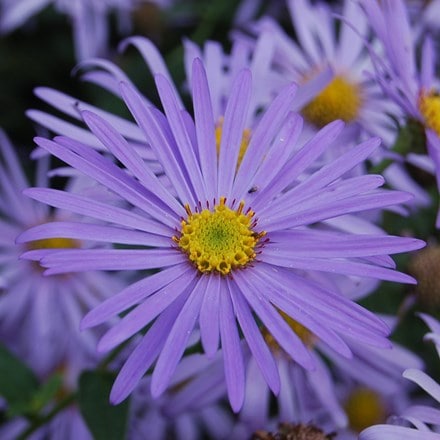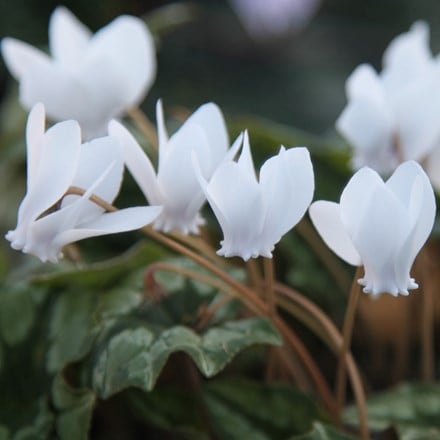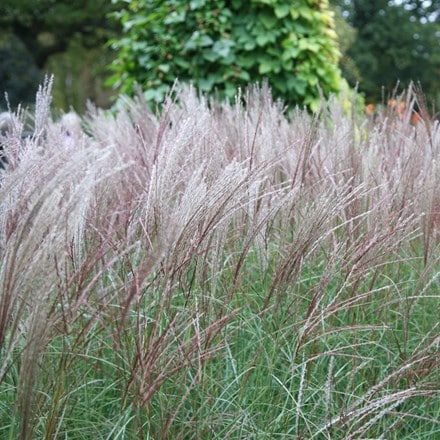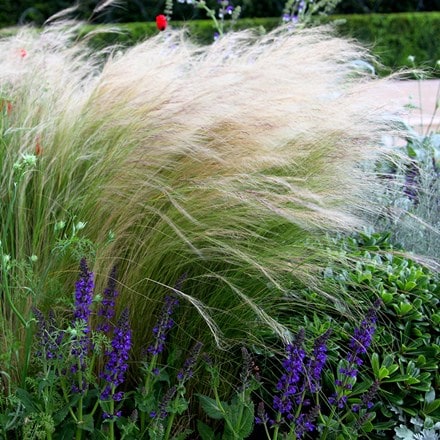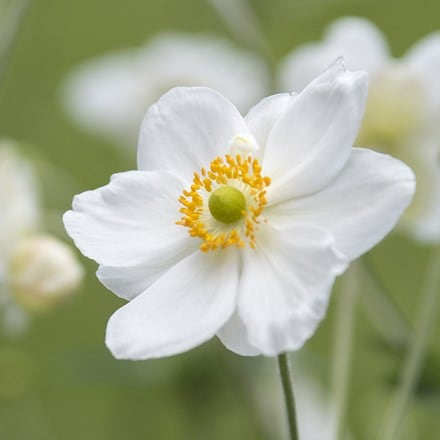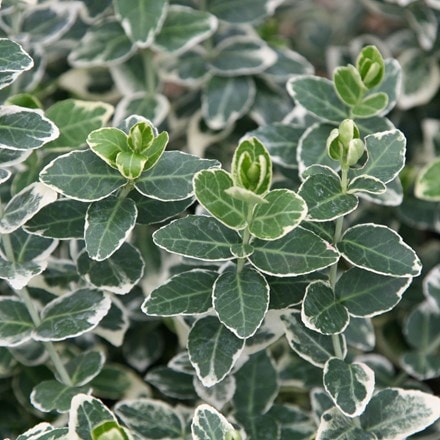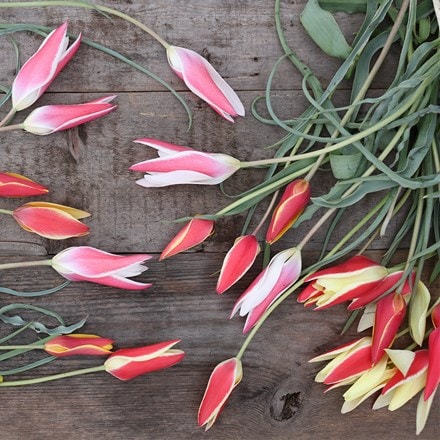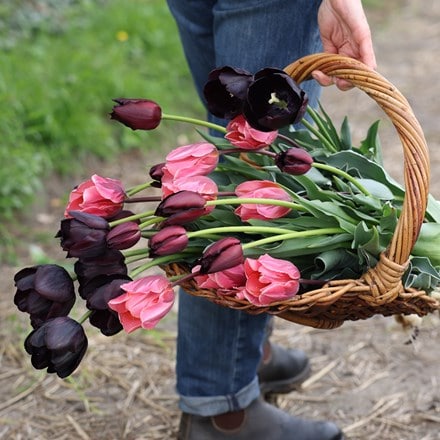
Written by: Crocus Head Gardener Ashley Edwards
September is a time of gentle shifts in the garden. The air takes on a different quality, the earthy scent reminds us that autumn isn’t so far away. Mornings can feel slightly crisp, evenings cooler, and the first few leaves begin to fall (although this has been hastened by the dry weather this year!).
It’s a good time to think about your garden space. How has it looked to you this year? What’s thrived and what's struggled? Is it resilient, or does it require a large amount of labour from you? Perhaps you want to be more hands on and start a new project? September is also a great time to look ahead to next year and plan your spring bulb planting.
I’d like to share with you some projects and ideas for gardening in September.


Pruning
You can prune many of your evergreen shrubs and hedges this time of year. A September prune is more about lightly shaping and tidying than hard formative pruning. What you want to avoid is encouraging lots of new shoots as these can be damaged by the upcoming frosts.
Late flowering shrubs like hardy Hibiscus, Cistus and Abelia, can all be pruned to shape in September. Once the flowers have finished, use clean sharp secateurs or hedge shears to take spent flowering shoots back to the next set of healthy leaves. This will keep the shrub looking neat and encourage bushy growth next year. If you do need to rejuvenate a shrub by performing a hard prune, this is best done in late winter or early spring.
Evergreen hedges like yew, buxus, laurel and holly can also be pruned this time of year. Again, you don't want to do any hard pruning, but instead just take off the soft summer growth to reshape. Use hedging shears for small hedges or topiary or get yourself a pair of battery powered hedge trimmers to make quick work of it. Always check for nesting birds as some species will nest later in the year, it is illegal to disturb a nesting site. Keeping your hedges clipped will create a formal backdrop for other plants, and produce a dense hedge that is good for blocking out noise, pollution and undesirable views.
Some trees can be pruned in September. Birches can benefit from a crown lift now as the flow of sap has slowed down and bleeding is less likely. Hornbeams can also be crowned lifted in September. It’s sometimes easier to see what to remove when the leaves are still on the tree, casting shade. The purpose of crown lifting is to allow light to penetrate under the canopy of the tree, opening up opportunities for underplanting, creating a clear tree trunk and avoiding obstructions. Any dead branches will be more obvious this time of year too, so remove these with a sharp pair of loppers or saw.
If herbaceous plants have flopped over in winds and died back, you can prune these to the ground. Try the chop and drop method where you leave the well chopped material on the soil surface to be composted by microorganisms. Leave any seed heads of grasses, alliums and other structural plants, for winter interest. Resisting the urge to cut and tidy everything also provides essential habitat for insects. If you do need to tidy, do it in sections to allow any creatures the chance to move on.


Salvia Cuttings
Salvia provide colour all summer long and are a great plant for pollinators. Some aren't winter hardy and shrubby salvias can get woody with age. September is a great time to take cuttings of your favourite salvia to overwinter and plant out in the garden next spring.
Cuttings taken this time of year are generally semi-ripe, meaning the base of the shoot will be starting to harden whilst the tip is still soft and pliable. Choose upright, non-flowering stems that are disease and pest free, with healthy tips. The best time of day to collect cutting material is early morning whilst temperatures are cool. If you are taking lots of cuttings, use a plastic freezer bag, or similar, with some damp kitchen tissue inside, place your material in the bag and seal. This helps to retain moisture in the cuttings and prevent wilting.
Once you have all your material, it’s time to prepare them for potting up. Using a clean, sharp knife, cut the stem at the point just below a pair of leaves (known as a node). The cutting should be 5-8cm for best results. Next, carefully pinch off any of the lower leaves and leave just the shoot tip.
When it comes to potting you can dip the cuttings into rooting hormone powder. I've had success without the need for powder, but it can help to speed up the process. I like to use recycled square 9cm pots and place the cuttings into the four corners. It helps stabilise them and by placing them next to the side of the pot, allows for good drainage and root growth. You can use any small pots you have handy and place 4-8 cuttings per pot, don't overcrowd as this will encourage rot and pests. Keep your cuttings well watered but avoid overwatering as the cuttings will rot. Place a clear plastic bag or propagator lid over the cuttings to keep them humid and place them on a bright windowsill or in a greenhouse.
Keep your cuttings frost free and they will be rooted and ready to go by spring next year.


Plants for Autumn Interest
As the seasons change it’s a good time to look ahead and think about structure for your autumn/winter garden. There are many different late flowering plants that will provide interest through autumn and they are all worth looking into.
Asters - are in the daisy family and have a cluster of central flowers surrounded by a wheel of colourful petals. They come in a range of shades of purple, pinks and white. Eurybia divaricata (white wood aster) is a tough spreading perennial that works really well under trees and tolerates dry shade surprisingly well. Plant asters toward the middle or back of borders for an autumn show.
Cyclamen hederifolium - are a great plant for underplanting deciduous trees and shrubs. They have dainty winged flowers that come in shades of pinks and whites. Planted on mass on a bankside or rockery they really brighten up the garden in autumn. The leaves generally emerge after the flowers and look like variegated ivy leaves, hence the species name. They are a tuberous plant and you can usually buy them either as a tuber in spring or as a potted plant in autumn.
Late flowering grasses - Miscanthus, Stipa, Panicum, Calamagrostis, Anemanthele are all great for autumn interest. They flower heads sway in the breeze and are often in coppery tones. Leave them standing over winter and cut back in early spring for an extended season of interest.
Japanese Anemones - are a real jewel of autumn. They are a versatile plant, suitable for cottage, Japanese and woodland style planting. Most get quite tall, 50-150cm, so place towards the back of a border and stake in spring if you are on a windy site. They like a rich soil and will produce spreading rhizomes. Anemones can be planted as rhizomes or potted plants, they don't like root disturbance and can take a few years to establish. Once they get going they are tough plants.
Sedum (Hylotelephium) - are a classic autumn flowering herbaceous perennial. These plants have succulent leaves and flat topped flower heads, often in shades of pink, but also available in white. They are a great, late food source for pollinators. They are drought tolerant and easy to look after. Cut back old flowering stems to the ground when you see new shoots emerging from the crown of the plant. Around May, pinch out the shoots, or cut every third shoot to the ground. This will create a bushier plant and prevent them flopping open in the middle.
Evergreen shrubs - add bones to your borders with the use of evergreen shrubs like yew, euonymus, myrtle, choisya, olive, pittosporum, bay, mahonia, eleagnus, viburnum and box (if you're prepared to treat for box moth). Evergreen shrubs can provide an excellent backdrop for your flowering plants and can be used to create divisions in borders. Keep them clipped regularly to prevent them dominating a space or shading out other plants. You can also choose evergreens with variegation or contrasting coloured foliage to add extra interest in winter. Plant these shrubs in autumn to give them the best chance to establish roots during the cooler months. Water in well and mulch with an organic garden compost to retain moisture and suppress weeds.



